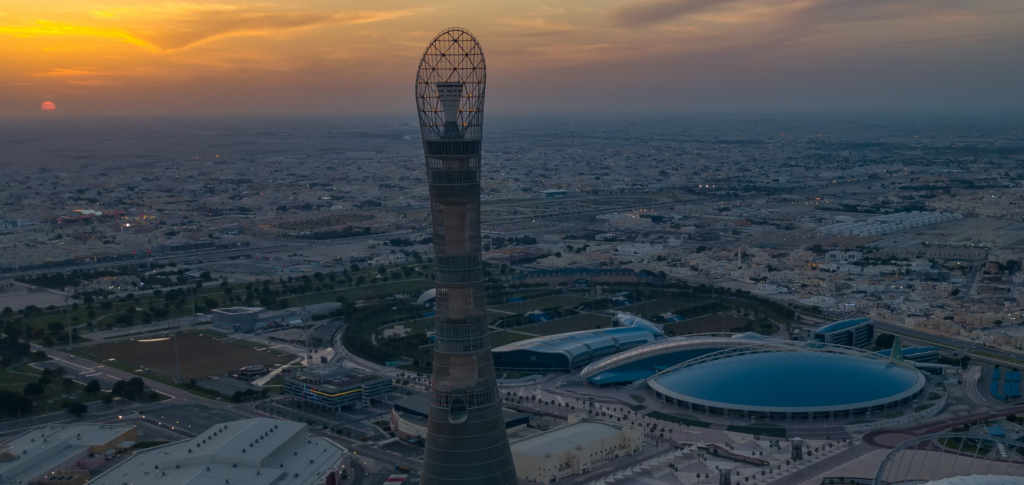Public more than VIP
All stadiums have wings VVIP – with two “sees” – where the heads of state and FIFA leaders will be received and where the special room of the emir, the most important figure in the world, is also located. Catar. These luxurious areas are large, furnished with comfortable sofas and armchairs and decorated with objects from local culture or with paintings and photographs that illustrate the country.
ADVERTISING
Dozens of cabins offer excellent views of the countryside. There is also a VIP area, which only differs from the first by the absence of the emir's room and the president's lounge. Fifa.
Always fresh
Saud Abdul Ghani, the engineer responsible for the air conditioning system in all World Cup stadiums, says that, in most of them, the air comes out from under the fans' seats. There are also types of cannons that throw cold air onto the field. The temperature is kept mild up to a height of more or less two meters above the players. The shape of some of the stadiums also helps keep the air cool.
To cool the stadium, it takes two to three hours with the system on. In summer, when thermometers can reach 50ºC in the country, the internal temperature remains at 21ºC.
ADVERTISING
The energy required to maintain the refrigeration system of the eight stadiums is guaranteed by a solar panel farm built especially for the World Cup, with the capacity to generate ten times what is needed to supply them all!
Maintenance is laborious because of the poeanger and sandstorms, explains Abdul Ghani. Solar energy represents 10% of Qatar's energy matrix – natural gas is the main source.
Locker rooms
At Al Janoub, in addition to a locker, players have access to a small safe. Each team has a massage room at their disposal, a space with artificial grass for practicing some moves or a preliminary warm-up, a jacuzzi, an ice bath for cryotherapy and a room for prayers – with, obviously, an indication of Mecca.
ADVERTISING
974
Stadium where Brazil will play the second match of the World Cup, against Switzerland, the 974 looks like it's made of colorful pieces of Lego. In fact, it was entirely built with containers and steel modules and will be dismantled after the World Cup. The material could be used to build smaller stadiums or even one similar elsewhere.
As it will be dismantled, it is the only Qatar Cup stadium without air conditioning. The interior has colorful decoration, following the external pattern. The players' changing rooms have benches and lockers made from the same material as the containers, which gives the impression of being a simpler – but also more modern – stadium than others like Al Bayt.
With capacity for 40 thousand people, the 974 is the closest stadium to the center of Doha and overlooks the bay and the modern buildings of West Bay. It can be accessed by subway and a kind of “beach club” will be set up nearby during the World Cup.
ADVERTISING

Al Bayt
By far the opening stadium of the Cup It doesn't look like a stadium, but rather a gigantic tent. The architecture of Al Bayt is inspired by Bedouin tents and the interior of the arena impresses with its opulence. In the changing rooms, for example, a comfortable fabric-covered sofa was installed in place of traditional benches.
After the World Cup, the VIP area will be transformed into a five-star hotel. The incorporation of a shopping mall and a sports medicine hospital are also planned.

Al Janoub
Al Janoub is located in Al Wakrah, a city with just over 30 inhabitants that was once a pearl exploration village – hence the shape of the stadium reminiscent of a typical Qatari fishing boat and the stands, the sea.
ADVERTISING
Al Janoub's shape, however, was a source of controversy when the project was released – many compared it to a vagina. At the time, the Iraqi architect responsible for the design, Zaha Hadid, said the comments were “ridiculous”. She suggested that the comparison would not have been made if the architect had been male. Hadid was the first woman to win the Pritzker Prize, a kind of Oscar for architecture, in 2004. The stadium has a retractable roof, which is closed to cool the place. When the temperature drops, it can be opened again.
Al Janoub was the first stadium built for the Qatar World Cup to be ready and was opened in May 2019, three and a half years before the dispute. Among the games it will host are some from the same group as Brazil, such as Switzerland x Cameroon and Cameroon x Serbia.

Ahmad Bin Ali
Opened in December 2020, Ahmad Bin Ali was built where the old Al Rayyan team stadium stood – which was demolished. According to the Organizing Committee, more than 90% of the materials used in construction were recycled and the trees that surrounded the old facility were replanted.
The stadium has a shiny white facade and the idea is that it recalls different aspects of the country's culture, such as the beauty of the desert, flora and fauna. Like the stadium, the metro station – a ten-minute walk away – and the shopping mall next door were built for the World Cup. The capacity for 40 people will also be reduced by half after the World Cup.

Al Thumama
With the facade representing the “gah fiya” – a white cap that is a symbol of dignity and is worn by Muslims under the white scarf that covers their heads – Al Thumama does not have as luxurious an interior as other stadiums. The changing rooms, for example, have discreet white furniture. The VIP area also has tables, chairs and sofas with a less elaborate but elegant design, as well as some objects from local culture.
The venue would host the first game of the World Cup, which was scheduled for 13 pm on November 21st between Senegal and the Netherlands – the opening ceremony would be after that match and also after England and Iran. A change announced a hundred days before the start of the World Cup, however, it took the first game away from Al Thumama, which will take place at the Al Bayt stadium, between Qatar and Ecuador, immediately after the opening. Usually the host country opens the World Cup.

City of Education
Located in a region of universities, such as Georgetown and Northwestern, the Education City is the easiest accessible stadium of all in Qatar. The metro station is 500 meters away and the neighborhood has a free surface train system that connects the various educational and research institutions – one of the boarding points is in front of the stadium.
Cidade da Educação is another stadium for 40 thousand people that will have its capacity reduced by half. Rhombuses make up the facade, and the intention is that they refer to the durability, quality and resilience of diamonds.
After the World Cup, the facilities should be used by the Qatar women's team and for sports practice by the local community, mainly students. Two schools and a conference center are to be included on the site.

Khalifa
The only one that was not built specifically for the World Cup, the Khalifa International Stadium has existed since 1976, but was remodeled for the 2022 World Cup. The capacity was expanded by 10,5 seats (the total is now 40) and special lighting was added. LED light was added, as was the air conditioning system.
Unlike the new stadiums in Qatar, whose small air vents were installed under the seats, at the Khalifa, they are larger and have 2.013 units, which blow air into the stands and the field.
Ready for the World Cup since 2017, the Khalifa is easily accessible by metro and is located next to The Torch hotel. One of the best-known in the country, the hotel is a 300-meter-high torch-shaped tower, with 51 floors and 360-degree views of Doha. It even appears to be part of the stadium. The hotel is connected to the luxurious Villaggio Mall.

lusail
With a capacity for 80 people, the Lusail stadium will host the World Cup final and two Brazilian games in the group stage (Brazil x Serbia and Brazil x Cameroon), as well as other matches that will catch the attention of fans, such as Argentina x Mexico and Portugal x Uruguay.
Built 20 km from the center of Doha, the stadium is in Lusail – a city designed for 250 inhabitants that was almost completely built in the last ten years. At the end of June, construction was still intense in the region, both on residential buildings and infrastructure around the stadium.
The stadium's architecture is inspired by the interaction between light and shadow in a traditional Qatari lamp model. The government is considering modifying the site, after the World Cup, to make way for housing units, stores, clinics, a school and a community football field.

Source: Estadão Content



